Spanish Style Christmas Kitsch
I first encountered the OTT Spanish nativity at a Christmas feast hosted by my uncle-in-law. Tío Mariano is famed for stuffing his guests with enough fine wine, top shelf jamón, and truffles to bring on a deep and lasting food coma. I wound up stupefied however, the moment I walked through the door. Dominating one corner of his dining room was an entire model town. A town complete with a stream that flowed with actual running water. An extravagant Spanish nativity scene so large that it took several minutes to spot the baby Jesus in among the bustle of a miniature Bethlehem.
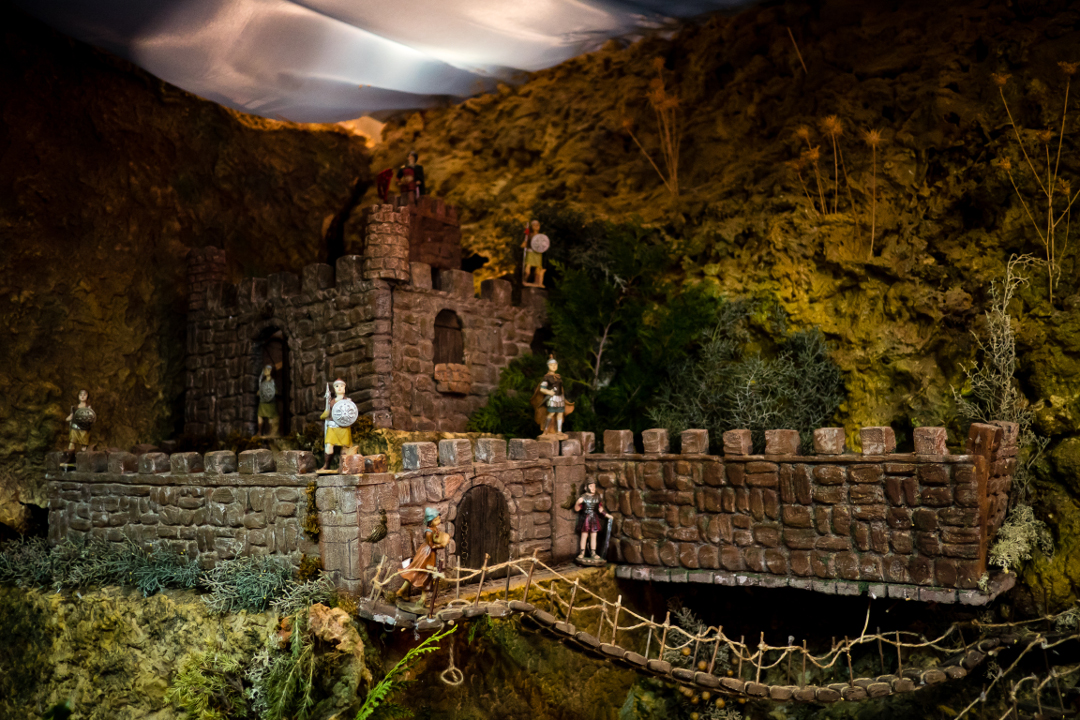
Growing up in the UK, my nativity experience had been strictly limited to the holy family unit accompanied by an underwhelming entourage of donkey, shepherds and wise men. Here in Spain, clearly they went much much bigger! Perhaps this had something to do with a Mediterranean love of massive gatherings? Or perhaps it had something to do with outdoing the Garcías next door? The historic answer to this question came years later on a visit to Naples. Wandering around the city centre I discovered a narrow road lined with shops entirely dedicated to nativity models. It seemed that the massive nativity scene was not a Spanish, but a Neapolitan invention.
King of Bling
Back in the 18th century, the Spanish King of Naples was Charles of Bourbon and his wife, Maria Amalia. Though Charles was Spanish and Maria Amalia was from Saxony, the couple loved Naples and, Naples loved them right back. When Charles became king of Spain in 1759, Maria Amalia was not exactly thrilled. She didn’t speak Spanish and was not particularly keen on learning. Good thing she’d brought 7,000 Neapolitan nativity figurines with her for company!
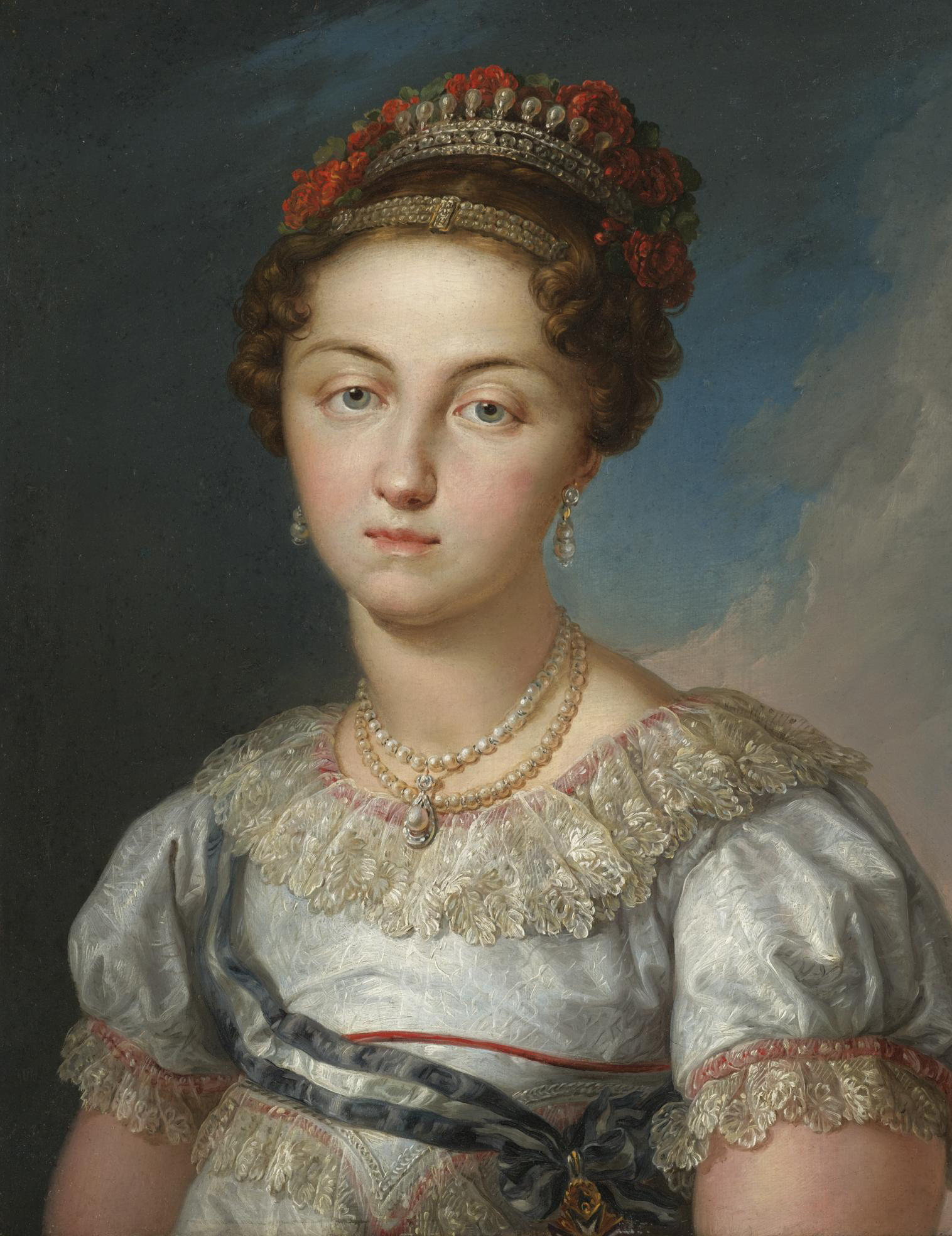
The royal couple moved into Retiro Palace accompanied by Maria Amalia’s collection of creepy dolls. That Christmas Maria Amalia set up the first lavish Spanish nativity scene inside the palace. A whole town populated by expensive-looking figurines. Impressed, the visiting aristocracy copied the tradition themselves. Maria Amalia, however, did not live to see this, dying before she could celebrate another Christmas. Charles, now Charles III, honored her by continuing to set up a Belén every year. Later he established the Belén del Príncipe (Prince’s Nativity) for his son Charles IV.
A Princely Collection
The Belén de Príncipe still exists and appears every year in the Palacio Real. One of the nice little quirks of this Spanish nativity is that it includes models of famous buildings in Madrid. Depending on the year you can spot buildings such as Saint Antonio de la Florida (Goya’s final resting place), or the Convent of la Encarnación (where every year a bizarre and bloody miracle takes place). The figures are from Genoa, Naples and Murcia. Famous Belén workshops in Murcia include: Griñán, Carlos Cuenca, Guillén, Galán, and Alejandro Fernández.
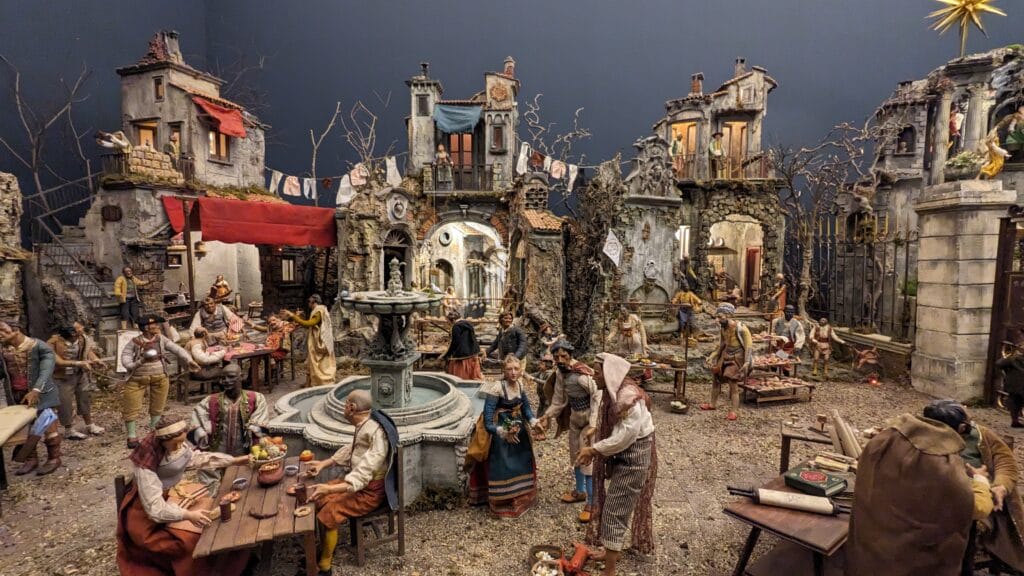
In 2024 I got invited to see a sneak preview of the Belén in the palace and chat with the curators, so if you want to take a peek, view the video below:
Figures are made from porcelain, wood, or clay. Many in the royal collection have moveable limbs, allowing the custodians to come up with new inventive scenes each year. However, if you want to see a more modern pesebre navideño (nativity scene), you don’t have to go far. They pop up just about anywhere: shop windows, empty market stalls, town halls, libraries… Some have moving parts or even train stations and look more like a scene from Harry Potter than from ancient Galilee.
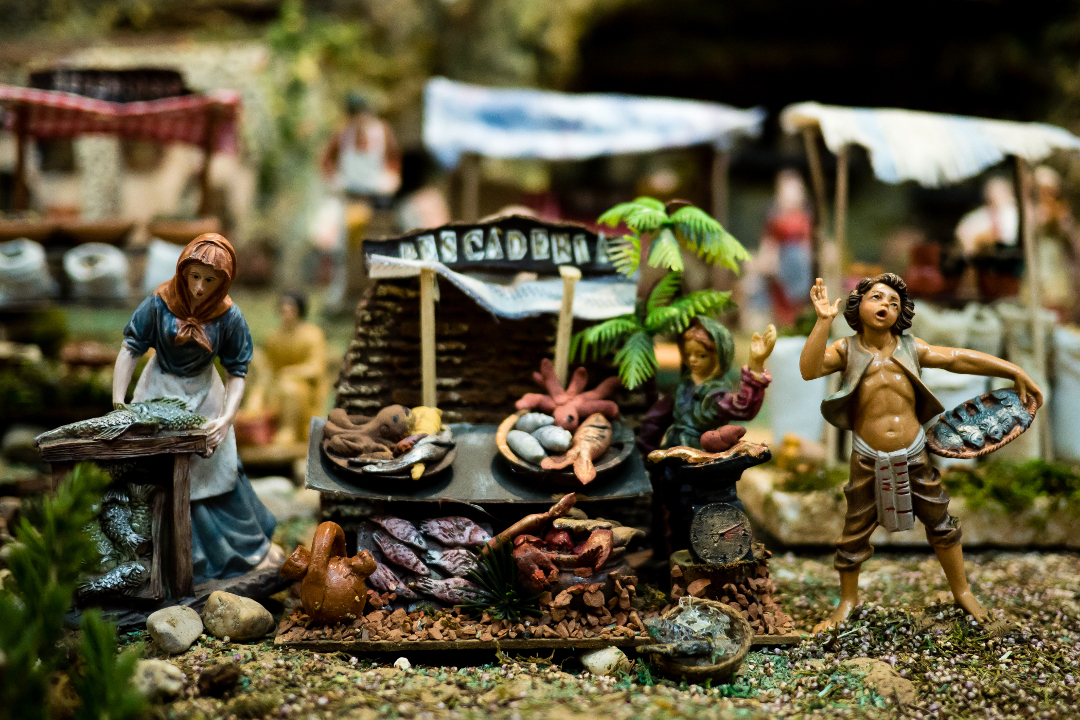
The Secret Shitter
By far the best “innovation” to hit Madrid’s Belénes in recent years is the caganer. Kegs down, squatting mid poo, this mysterious figure first appeared in Cataluña around the late 17th or early 18th century. The figure’s significance is open to interpretation, as nobody quite knows why he exists. Tucked away in some hidden spot far from the baby Jesus, the caganer, traditionally a peasant in a red hat, is somewhat of an incongruous sight among an otherwise rather schmalzy scene of olde worlde shoppes.
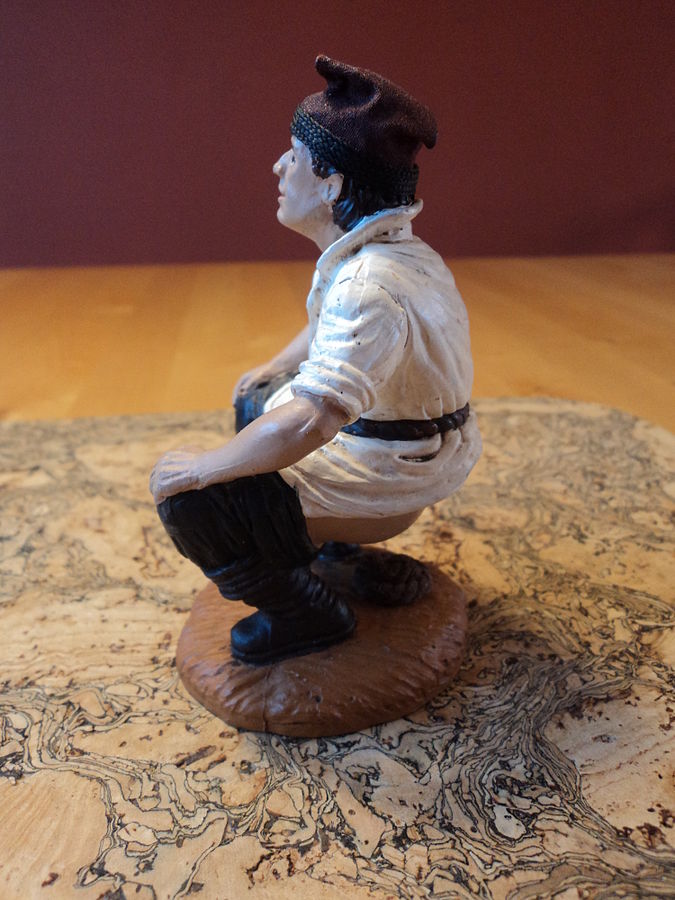
In the past the caganer only appeared in Catalonian, Murcian, Valencian and Neapolitan nativities. However, in recent years these shitting figures have popped up in nativities throughout Spain. The reason for this is probably the rising popularity of celebrity caganers.
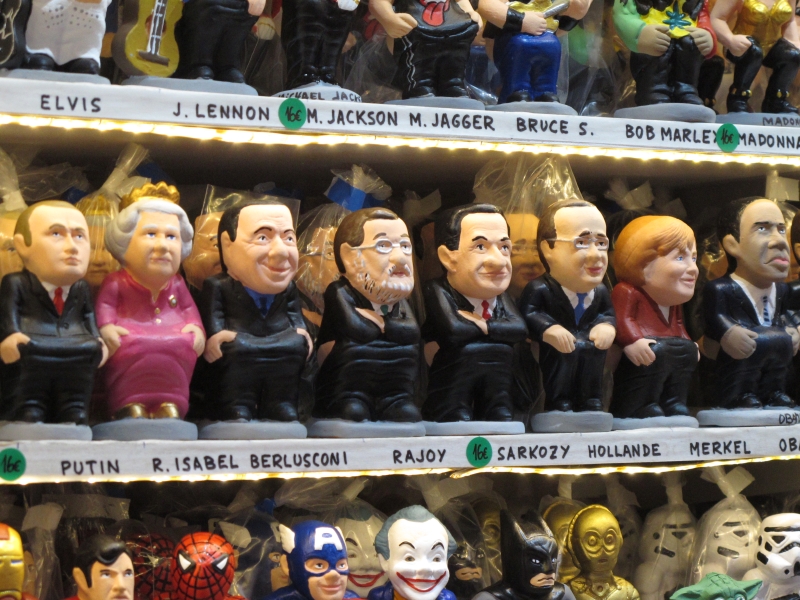
The most popular celebrity shitters change depending on the year. Back in 2016, a miniature of Donald Trump taking a nice steamy dump sold out. Last year the hottest item was a pooping Rosalia. This year’s caganers include Joe Biden, Leo Messi and Ansu Fati. By far the most popular is epidemiologist Fernando Simón, a man who has played a key yet controversial role in handling Spain’s response to the Coronavirus pandemic.
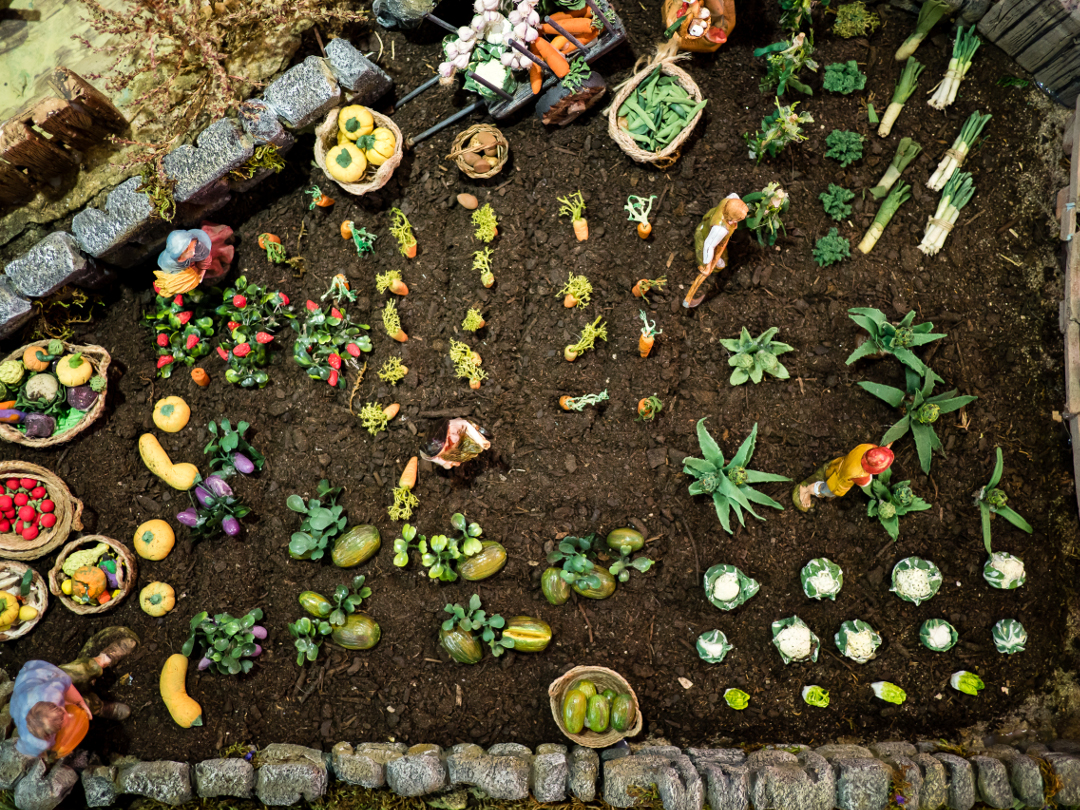
Spanish Nativity Fun
Besides seeing celebrated figures brought to their knees, part of the joy is trying to find the caganer. A scatological version of Where’s Wally, which, depending on your sensibilities could provide a fun diversion for all the family.
Speaking of fun, if you’re stuck for something to do this Christmas, why not go on a tour of Madrid’s best Belénes? Breaking up viewings with a warm drink on a chilly terraza might just be the thing to bring a bit of cheer to what has undeniably been a rather shitty year!
Where to see a classic Belen Christmas 2023/2024
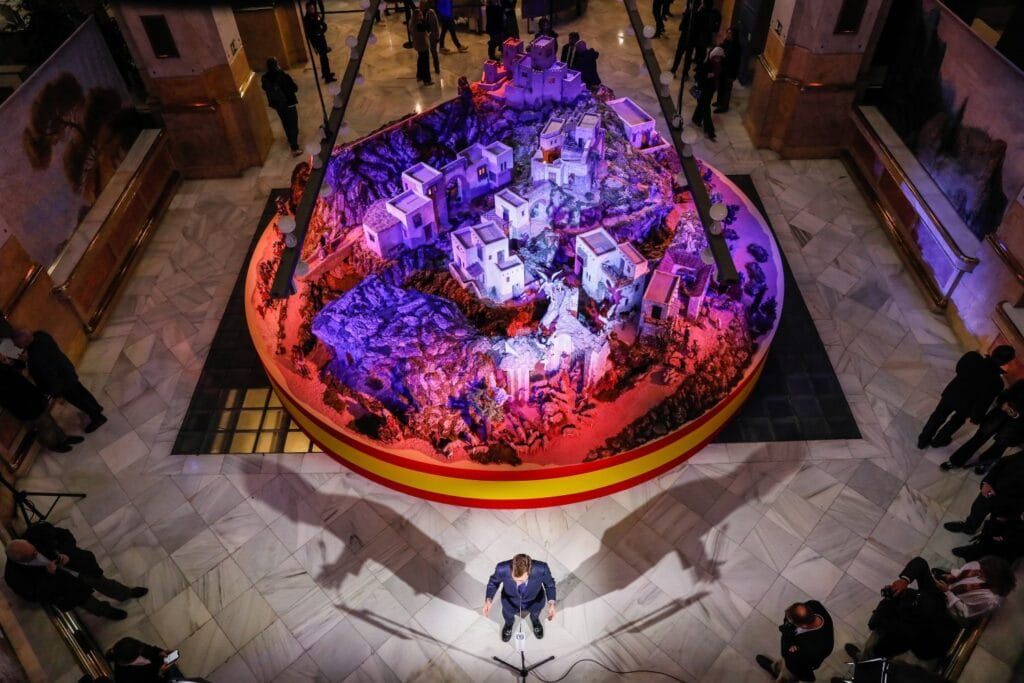
A Belén – La Montaña de los Gatos del Retiro: An exhibition of nativity scenes from all over the world has been installed in Retiro’s recently refurbished artificial mountain. The scenes all come from the Basanta-Martín collection and include nativities from Ethiopia, Tanzania, Malaysia, Vietnam, and the United States. Open until Jan 8 from 11 am to 1 pm and 6 pm to 8 pm.
Belén del Museo de Historia de Madrid – Calle Fuencarral, 78: This one is a proper Neapolitan nativity complete with 18th-century figures similar to the collection brought over by Maria Amalia of Saxony. Open between 10 am and 8 pm until Feb 4, 2024.
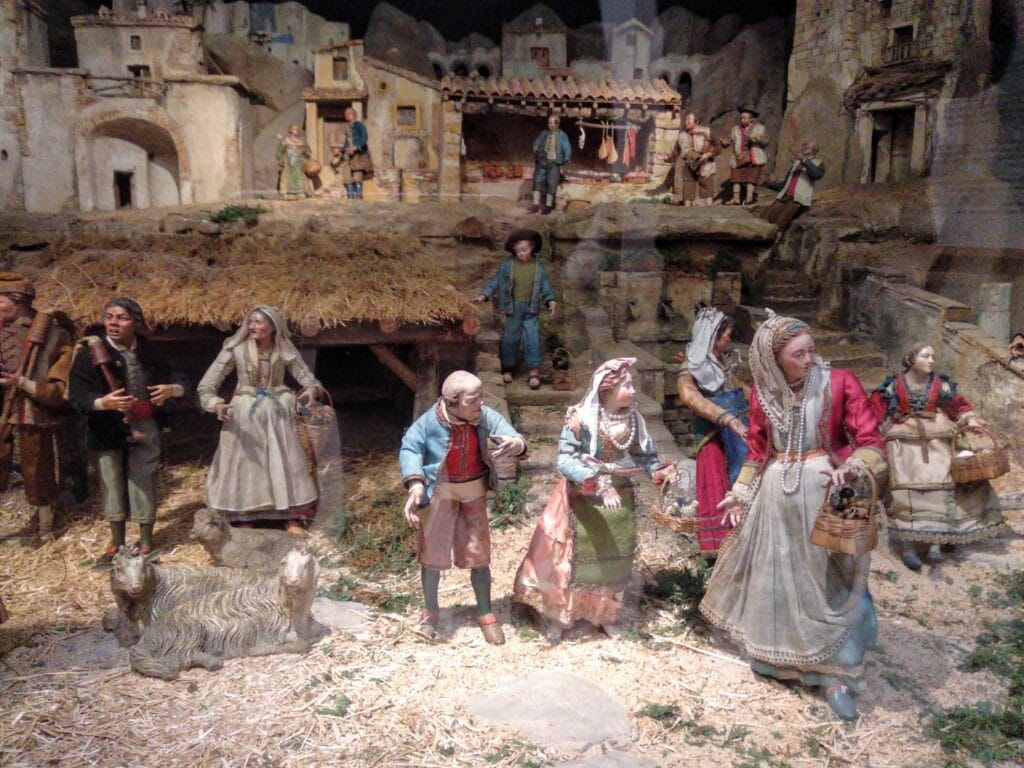
Belén Puerta del Sol – Puerta del Sol, 7: Housed in the Casa de Correos – famed for its 19th-century clock – this is the place to go to see a classic Spanish nativity. Look out for the figure of San Isidro, Madrid’s patron saint who was added to the scene last year to celebrate the 400th anniversary of his being declared a saint. Open most days from 10am to 10pm until Jan 6.
Belén del Ayuntamiento de Madrid – Plaza Cibeles, 1A: Another official nativity, this one is located in CentroCentro and while free to members of the public, you need to make a reservation to visit. This one is a collaborative effort between artist José Luis Mayo and Madrid’s association of “Belenistas”. Open from Tuesday to Sunday 10:10 am to 7.30 pm until Jan 5
Belén del Príncipe – Royal Palace, Arco de Santiago: The queen’s collection of figures has grown since she came over from Naples back in the 18th century. In addition to 200 Neapolitan figures, you can find many Spanish works, some made by the restoration team at Patrimonion Nacional. Open Monday to Saturday 10:00 am to 6 pm and Sundays 10:00 am to 4 pm until 15 January 2024
Fancy seeing another side of Madrid? Check out my unique walking tours.
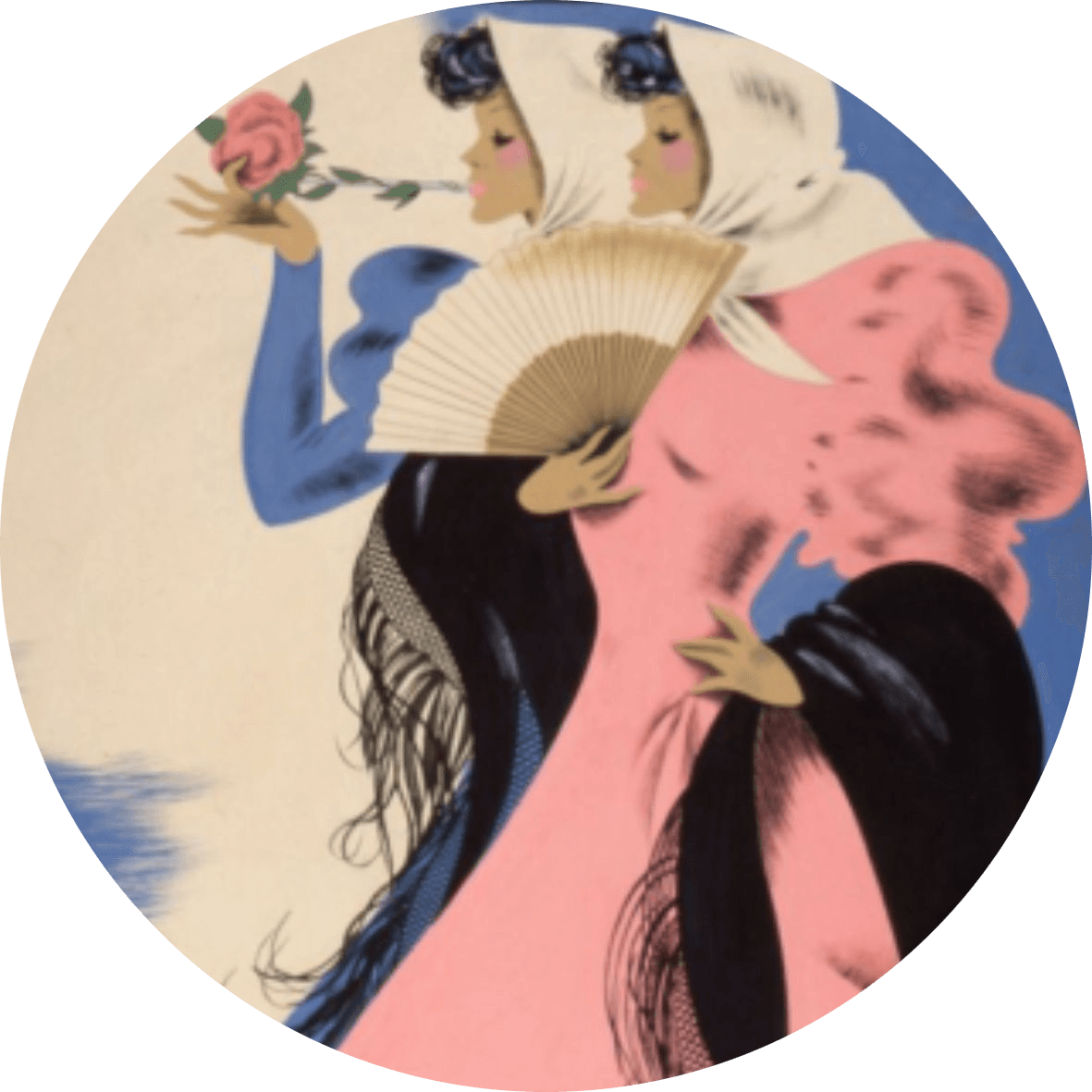
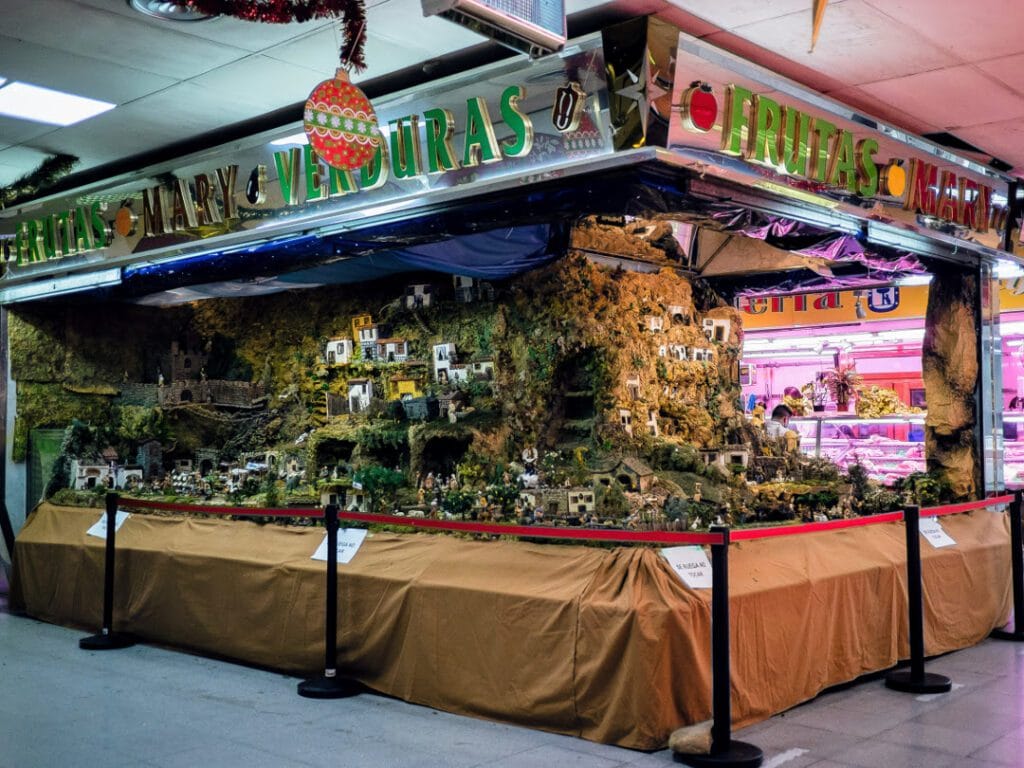
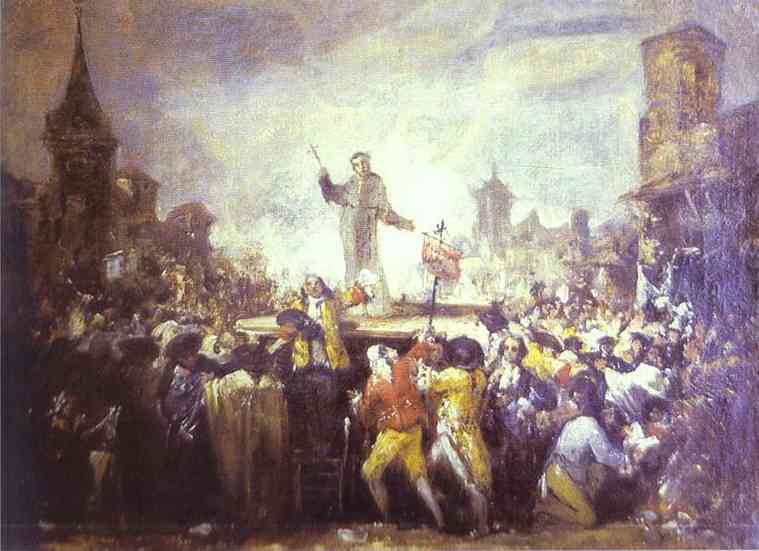

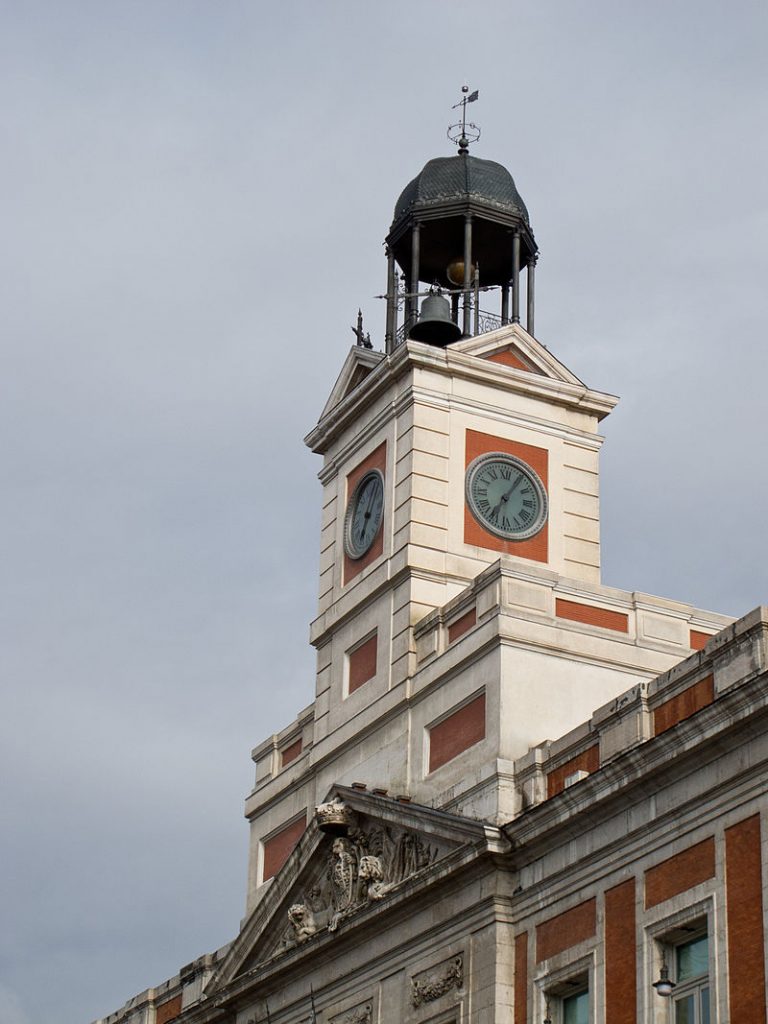
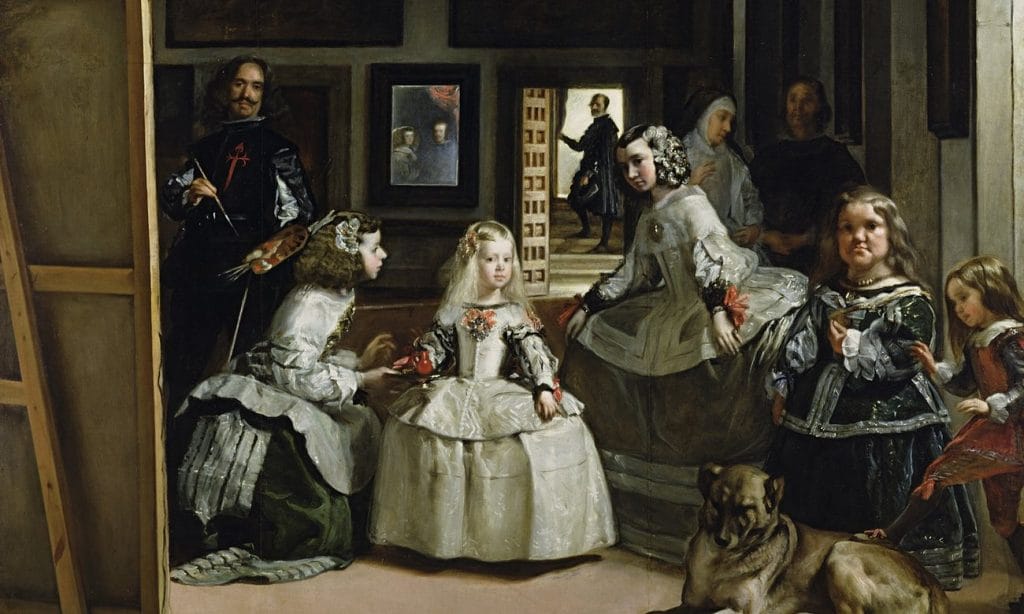
Pingback: How to Enjoy Christmas in Madrid - The Making of Madrid